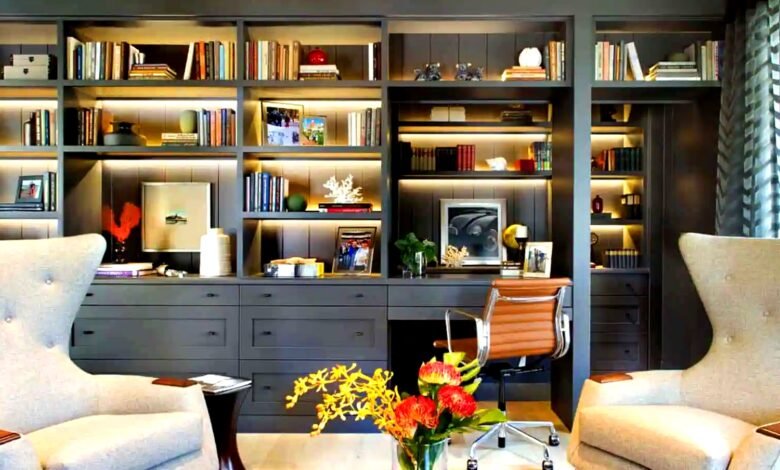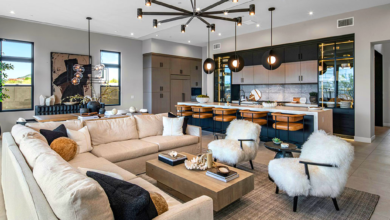How to Create a Home Office That Boosts Productivity and Creativity
This comprehensive guide will walk you through how to create a home office that not only meets your functional needs but also inspires creativity and focus.

In today’s dynamic work environment, more professionals are opting to work from home, making it essential to create a home office that fosters both productivity and creativity. Whether you’re a freelancer, remote worker, entrepreneur, or part of a hybrid workforce, a well-designed workspace can dramatically impact your efficiency and overall mental well-being.
This comprehensive guide will walk you through how to create a home office that not only meets your functional needs but also inspires creativity and focus. From choosing the right location to selecting ergonomic furniture and optimizing lighting, we’ll cover every detail to help you build the ultimate home office setup.
1. Choose the Right Location for Your Home Office
Prioritize a Quiet, Distraction-Free Space
The first step to create a home office that enhances productivity is choosing the right location. Ideally, select a room or area that is separate from your household’s main activity zones. Quiet corners or spare bedrooms work best. Avoid setting up your workspace in noisy places like the living room or kitchen if possible.
Use Space Efficiently
If space is limited, consider underutilized areas such as a walk-in closet, hallway nook, or attic corner. You can still create a functional and inspiring home office in small spaces with the right layout and design elements.
2. Invest in Ergonomic Furniture
Choose a Comfortable Chair and Adjustable Desk
To create a home office that supports long work hours, invest in ergonomic furniture. An adjustable chair with lumbar support and an ergonomic desk can significantly reduce the risk of back pain and fatigue. A standing desk or a convertible sit-stand workstation can also help improve posture and energy levels.
Maintain Proper Posture
Ensure that your desk setup supports good posture—your monitor should be at eye level, your elbows should form a 90-degree angle when typing, and your feet should rest flat on the floor.
3. Optimize Lighting for Focus and Mood
Use Natural Light Whenever Possible
Natural light is a major factor in creating a productive and creative home office. Position your desk near a window to take advantage of daylight, which can boost mood and reduce eye strain. Use sheer curtains to diffuse harsh sunlight if needed.
Supplement with Task and Ambient Lighting
If natural light is limited, invest in quality task lighting. Desk lamps with adjustable brightness and color temperature are ideal. Also, consider ambient lighting like wall sconces or LED strips to create a balanced and inviting atmosphere.
4. Keep Your Space Organized and Clutter-Free
Declutter for Mental Clarity
A clean and organized workspace helps reduce stress and enhances focus. Use storage solutions like file organizers, wall-mounted shelves, and drawer units to keep your desk clutter-free. Minimalism in your home office design can improve concentration and mental clarity.
Use Smart Storage Solutions
Vertical storage, hidden compartments, and multi-functional furniture are perfect for creating a tidy and efficient home office setup, especially in small spaces.
5. Personalize Your Space for Inspiration
Add Art and Décor That Sparks Creativity
Creating a home office isn’t just about functionality—it’s about making the space yours. Hang artwork, motivational quotes, or vision boards that inspire you. Use colors that spark energy and creativity like blue, green, or yellow.
Incorporate Plants and Natural Elements
Adding greenery to your home office can boost mood, purify the air, and foster creativity. Low-maintenance indoor plants like succulents, snake plants, or peace lilies are perfect for workspaces.
6. Use Technology to Your Advantage
Equip Your Office with the Right Tools
Technology plays a key role when you create a home office that maximizes productivity. Ensure you have a fast, reliable internet connection and necessary tools like a quality webcam, noise-canceling headphones, and external monitors.
Embrace Smart Devices
Consider integrating smart home office tech like voice-controlled assistants, automated lighting, or digital calendars to streamline your workflow and improve efficiency.
7. Establish Boundaries Between Work and Home Life
Create a Clear Work-Life Balance
One of the biggest challenges of working from home is separating work from personal life. Design your home office as a dedicated space strictly for work. Avoid using the space for leisure activities during non-work hours.
Set a Routine
Set regular work hours and take scheduled breaks. Use tools like time trackers or Pomodoro timers to stay disciplined and maintain a structured workday.
8. Add Sound Control for Better Concentration
Reduce Noise Pollution
When you create a home office, controlling sound can make a huge difference in your productivity. Use thick rugs, curtains, or acoustic panels to dampen noise. Noise-canceling headphones are also a great investment, especially in noisy households.
Play Background Music or White Noise
Soft background music or white noise can help maintain focus and reduce distractions. Consider playlists designed for deep work or productivity.
9. Prioritize Air Quality and Temperature Control
Maintain a Comfortable Environment
Poor air quality and uncomfortable temperatures can kill productivity. Ensure good ventilation and consider using an air purifier to keep the air clean.
Control Temperature with Fans or Heaters
Depending on your climate, you may need a small fan, heater, or portable AC unit to maintain a comfortable working temperature.
10. Embrace Flexibility and Continuous Improvement
Adapt Your Workspace as Needs Change
Your work-from-home needs may evolve over time. Regularly reassess your setup and make changes to enhance comfort and efficiency. Don’t be afraid to experiment with layout, colors, or even desk locations until you find what works best.
Gather Feedback
If you’re part of a remote team, ask peers for feedback on your video/audio quality or productivity tips. Stay open to learning and improving your environment.
Final Thoughts: Create a Home Office That Works for You
When you take the time to create a home office tailored to your specific needs, it becomes more than just a place to work—it becomes a sanctuary of focus and creativity. From ergonomic furniture and optimal lighting to personalized décor and effective tech, every element plays a part in shaping your productivity and mindset.
Remember, the goal isn’t to mimic a corporate office—it’s to create a home office that inspires you to do your best work every day in a space that’s uniquely yours.











